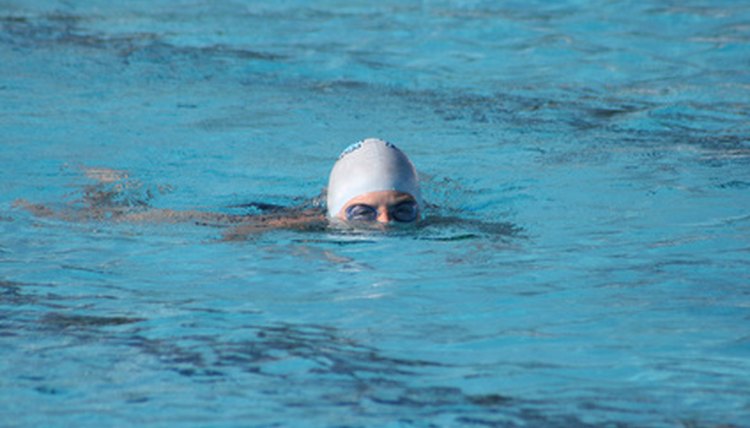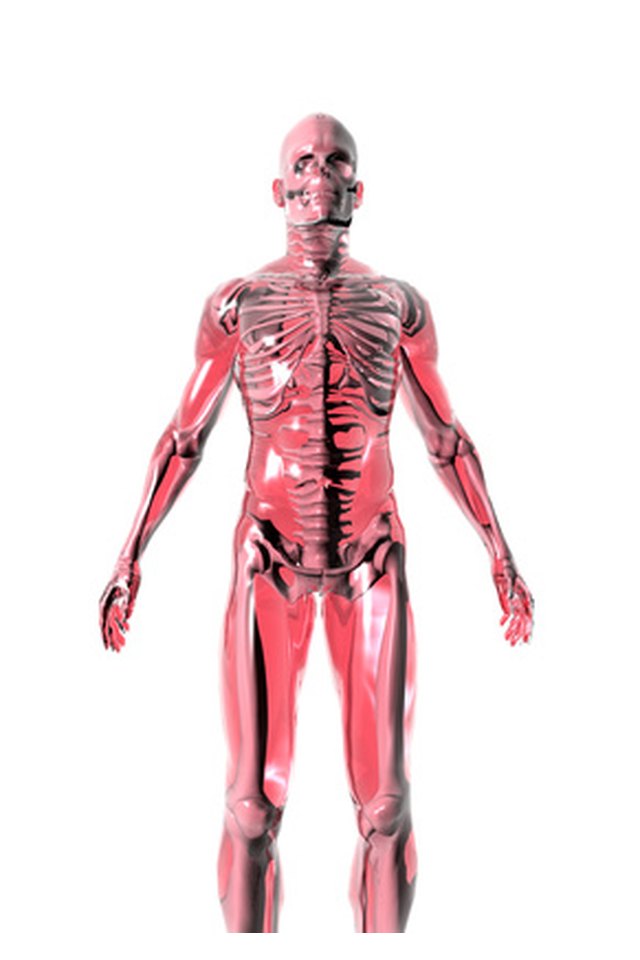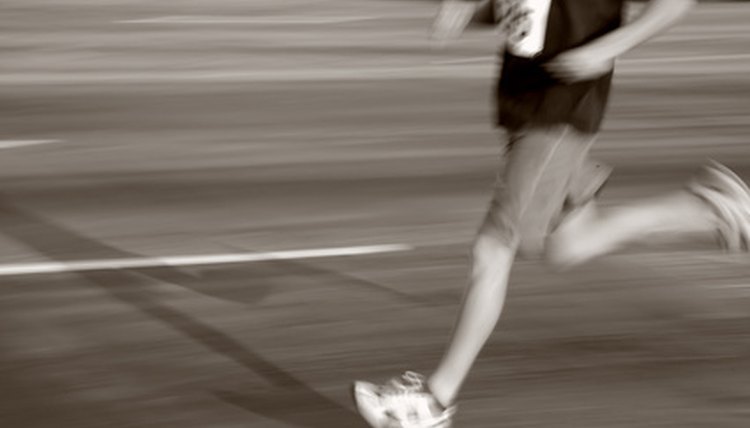Treading Water Exercise

Human beings are not the most natural of swimmers. Most of us have to learn technique. Treading water is not as technique-based; it is more intuitive and requires a little less coaching. However, it is strenuous. If you are looking for a challenging aerobic activity that spares your joints, make treading water a regular workout.
Floating in Water: How, Exactly?

sportsman - swimmer image by YURY MARYUNIN from Fotolia.com
Water is buoyant and fluid. These two qualities allow you to exercise intensely without incurring impact forces that may lead to lower-body muscle strains or bone fractures. Furthermore, whatever your body shape or fitness level, water exercise gets you fit without as great a risk of injury as land-based exercise. In fact, our ability to float in water is based on physics. Swim-Teach.com explains that because water's density is 1g/cm3, and the tissue density for average men and women is respectively 0.97g/cm3 and 0.98g/cm3, most of us will not sink.
Treading Water is an All-Body Exercise

sportsman - swimmer image by YURY MARYUNIN from Fotolia.com
There is more movement resistance in water than in air; the faster you move in water, the more resistance you create. When you tread water, you create surface-area pressure; your abdominals and the muscles of your hips, back and chest, and even your feet and hands, are all recruited to perform the hard work of pushing back against the water and maintaining your body's vertical position in such an unstable environment. If you tire too quickly to keep your head above the surface, try wearing a flotation belt or vest to keep you upright and in control.
Water + Heart + Leg
According to Shape Fit, water workouts provide the same benefits of land-based exercise even though your heart rate is 10 to 17 beats slower in water. Water's lower temperatures and reduced gravitational effects mean your heart does not have to strain to pump oxygenated blood throughout the body. You also do not need a lot of space to tread water, but you do need water deep enough so that you do not touch the bottom. Full leg extension allows you to recruit and strengthen more muscle fibers. All this promotes strong circulatory action.
Start Your Engines

sportsman - swimmer image by YURY MARYUNIN from Fotolia.com
Begin your workout with small, warm-up motions such as sculling, which is rapid back-and-forth arm movements performed just below the water's surface. Add gentle kicks, strides and splits underwater to activate muscles throughout your legs and hips. After 5 minutes, you can increase the intensity of these same moves by doing alternating intervals of one minute of hard effort with one minute of rest. Then, you can try treading water at different rates and durations. You can also change emphasis, alternating between arms and legs, for example, or switching every few seconds from fast work to slow.
Vertical Water-Treading Workouts

sportsman - swimmer image by YURY MARYUNIN from Fotolia.com
United States Masters Swimming describes a workout using freestyle's flutter kick. You scissor your legs rapidly, keeping them almost straight and your body upright while your arms scull. This specific workout builds flexibility and strength through speed-variation.
Another water-treading workout by USMS mimics running. You sweep your extended legs back and forth and pump your arms under the surface as you would on land, point your toes for maximum resistance for the forward sweep, and pull with your gluteals and hamstrings for the backsweep, closely replicating the running-action. Anyone seeking fitness can explore treading water and its many challenging routines.
References
Writer Bio
Based in New York City, Fiona Bayly writes about running with a focus on health, nutrition and training strategies for athletes from beginner to professional. She is an avid triathlete, former New England Scholastic Cross Country champion and current member of TeamUSA's age-group championship team in the sport of Aquathlon.
